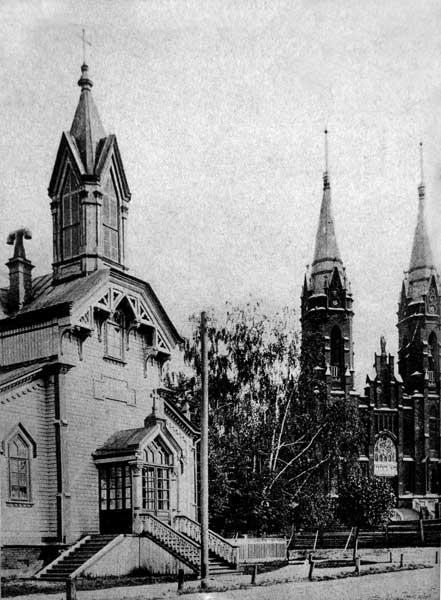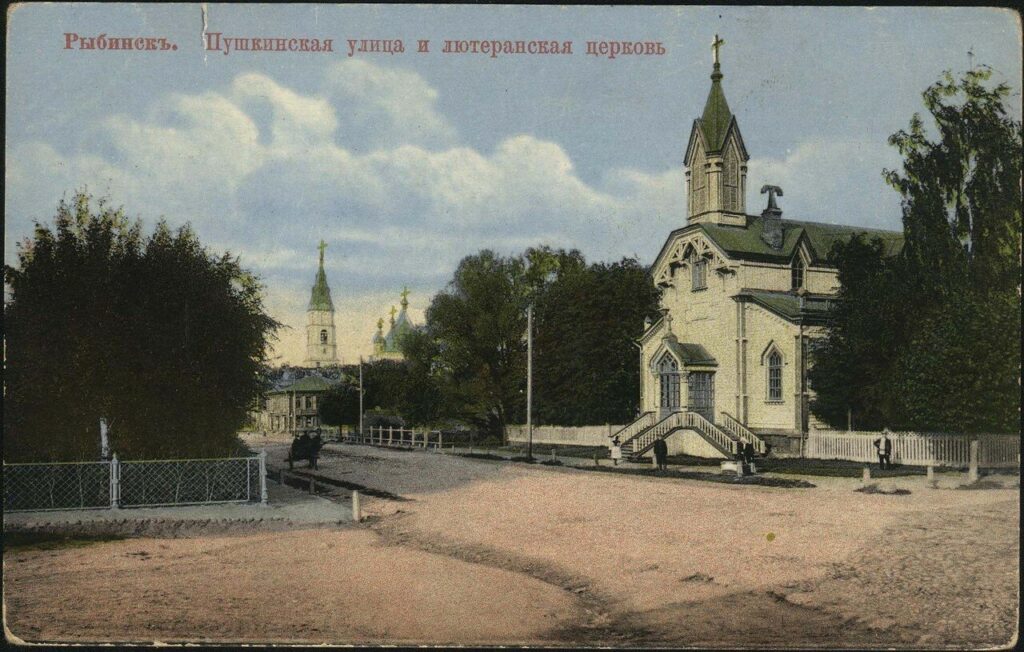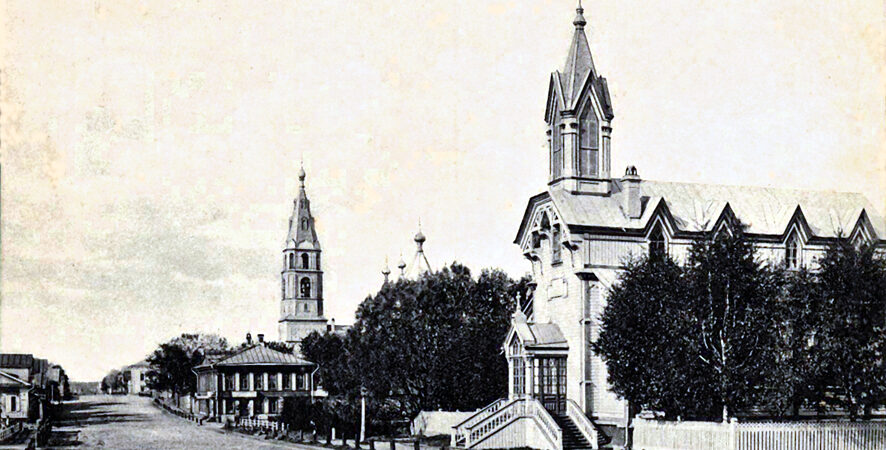History of Lutheranism in Rybinsk
Rybinsk is a picturesque city located on both sides of the Volga, and gave the name to the man-made lake – the Rybinsk reservoir. In Rybnaya Sloboda, as Rybinsk used to be called, people of different nationalities lived and worked, and, as a result, different religious views.

After the Reformation, the first Lutherans already came to Rybnaya Sloboda, but the composition of the communities was not constant. There is also no information about who served as pastors. But by 1871, there were 150 permanent members in the community, and the city authorities provided land, where later, by 1875, the first wooden Lutheran church in the city was built.
The location of the church more than ever emphasizes the loyalty of the population of Rybinsk to all nationalities and religions. She was on the street, which is now called Pushkin Street. On the left, literally 100 meters away, there was an Orthodox church, and 50 meters on the right, a Catholic church.
The first Rybinsk church was built of wood in the Gothic style. It was 17 meters long, 13 wide, and 9 meters high. The building itself was distinguished by the skill of construction, and the interior decoration – by the simplicity characteristic of Lutheran churches. On the left in the photo is a Lutheran church, on the right is a Catholic Polish church.
The parishioners of the community were mostly Germans who came to Rybinsk to open their manufactories here or to work in various fields, including education, production and trade.
By 1918, the parish already had almost 300 permanent members. The community, in addition to the church, owned a gymnasium and land for a Lutheran cemetery.

With the advent of Soviet power, the size of the community began to decrease, and services began to be held irregularly. By 1929, less than a hundred parishioners remained, and it was decided to leave the building. The community began to gather at home, practically hiding, and the building was transferred to the school and existed until the 1970s.
During the Second World War, Rybinsk was one of the points of temporary deployment of foreigners, including German citizens, before being sent to Siberia. On the left bank of the Volga in Rybinsk, in remote places, the so-called “German village” was built, where the settlers lived. Someone managed to stay here, and among the local population they began to be called “Volga Germans.” For the most part, they managed to start a family and “Russify”.
Since the 1960s, the development of the Volzhsky microdistrict began, the plant was developing, and the German village was being built up with new multi-storey buildings, resettling old wooden barracks. There is no exact information about how the Lutheran community lived, but the faith was preserved and carried through all the difficulties and hardships for more than 50 years.
With perestroika, a new wave of development of the Lutheran community begins. The descendants of those same Volga Germans gather in a makeshift church, pray and take communion as they know how, and as their fathers, grandfathers and great-grandfathers did. For them, Faith was in the first place, and it helped to survive and remain people – strong, believing in God and ready to teach their neighbor the Gospel.
In such a community, your obedient servant was elected as a pastor.
Daniil Suvor

Очень интересно!